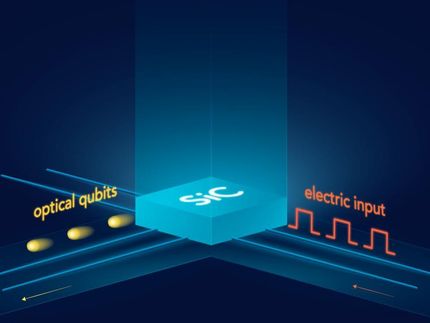Don't blink! NIST studies why quantum dots suffer from 'fluorescence intermittency'
Researchers at the National Institute of Standards and Technology (NIST), working in collaboration with the Naval Research Laboratory, have found that a particular species of quantum dots that weren't commonly thought to blink, do.
So what? Well, although the blinks are shorton the order of nanoseconds to millisecondseven brief fluctuations can result in efficiency losses that could cause trouble for using quantum dots to generate photons that move information around inside a quantum computer or between nodes of a future high-security internet based on quantum telecommunications. Beyond demonstrating that the dots are blinking, the team also suggests a possible culprit.
Scientists have regarded indium arsenide and gallium arsenide (InAs/GaAs) quantum dots to be promising as single photon sources foruse in different future computing and communication systems based on quantum technologies. Compared to other systems, researchers have preferred these quantum dots because they appeared to not blink and because they can be fabricated directly into the types of semiconductor optoelectronics that have been developing over the past few decades.
The NIST research team also thought these quantum dots were emitting steady light perfectly, until they came upon one that was obviously blinking (or was "fluorescently intermittent," in technical terms). They decided to see if they could find others that were blinking in a less obvious way.
While most previous experiments surveyed the dots in bulk, the team tested these dots as they would be used in an actual device. Using an extremely sensitive photon autocorrelation technique to uncover subtle signatures of blinking, they found that the dots blink over timescales rangingfrom tens of nanoseconds to hundreds of milliseconds. Their results suggest that building photonic structures around the quantum dotssomething you'd have to do to make many applications viablemay make them significantly less stable as a light source.
"Most of the previous experimental studies of blinking inInAs/GaAs quantum dots looked at their behavior after the dots have been grown but before the surrounding devices have been fabricated," says Kartik Srinivasan, one of the authors of the study. "However, there is no guarantee that a quantum dot will remain non-blinking after the nanofabrication of a surrounding structure, which introduces surfaces and potential defects within 100 nanometers of the quantum dot. We estimate the radiative efficiency of the quantum dots to be between about 50 and 80 percent after the photonic structures are fabricated, significantly less than the 100 percent efficiency that future applications will require."
According to Marcelo Davanço, another author of the study, future work will focus on measuring dots both before and after device fabrication to better assess whether the fabrication is indeed a source of the defects thought to cause the blinking. Ultimately, the authors hope to understand what types of device geometries will avoid blinking while still efficiently funneling the emitted photons into a useful transmission channel, such as an optical fiber.
Original publication
*M. Davanço, C. Stephen Hellberg, S. Ates, A. Badolato and K. Srinivasan; "Multiple time scale blinking in InAs quantum dot single-photon sources."; Phys. Rev. B 89, 161303(R) 2014.
Most read news
Original publication
*M. Davanço, C. Stephen Hellberg, S. Ates, A. Badolato and K. Srinivasan; "Multiple time scale blinking in InAs quantum dot single-photon sources."; Phys. Rev. B 89, 161303(R) 2014.
Organizations
Other news from the department science

Get the chemical industry in your inbox
By submitting this form you agree that LUMITOS AG will send you the newsletter(s) selected above by email. Your data will not be passed on to third parties. Your data will be stored and processed in accordance with our data protection regulations. LUMITOS may contact you by email for the purpose of advertising or market and opinion surveys. You can revoke your consent at any time without giving reasons to LUMITOS AG, Ernst-Augustin-Str. 2, 12489 Berlin, Germany or by e-mail at revoke@lumitos.com with effect for the future. In addition, each email contains a link to unsubscribe from the corresponding newsletter.



















































